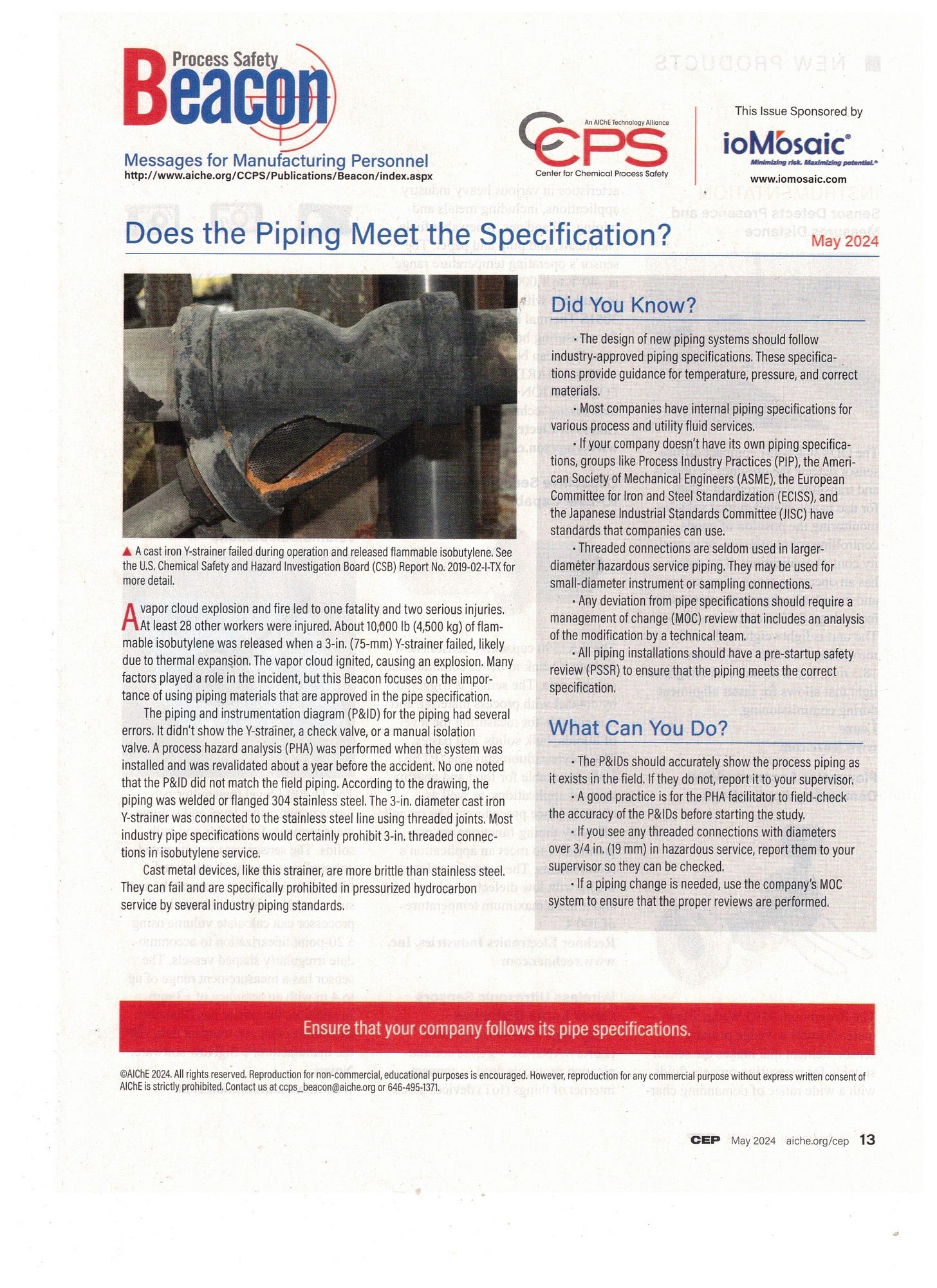Threaded Connections
The May 2024 edition of the Process Safety Beacon describes a serious incident that occurred when a Y-strainer failed. (The information is based on a Chemical Safety Board report.)
One of the factors in this event was that the strainer was attached to the piping with threaded connections. The piping system was 3 inch (75 mm diameter); most piping specifications would prohibit the use of threaded connections in this service on this size of pipe. (The Beacon suggests a working limit of ¾” or 19 mm.)
Threaded connections offer the following advantages.
They can be installed more quickly than connections that require welding or the use of flanges. No special skills are required (unlike welding).
They are low cost.
Because their installation does not require the use of welding equipment, the risk of fire is reduced.
In spite of these benefits, it pays to be cautious when using threaded connections for the following reasons.
The process of creating the threaded connections and fittings requires that the pipe material be cut, and so weakened.
The threaded connection can loosen over time due to vibration and thermal expansion and contraction (probably the factor in this incident).
Threaded connections can be more difficult to inspect (not always).
If proper care is not taken, it is possible to use incompatible threads in a particular service.





